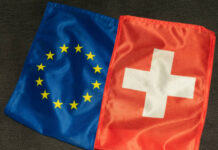Stocks and bonds in the US fell yesterday. Stocks fell, sent down by a nearly 10% plunge in Tesla and more than a 8% dive in Netflix. Chip stocks fell as well around the world as TSM cut its annual outlook for revenue due to geopolitical tensions and weak global demand, and announced that its Arizona production plant will be delayed due to shortage of qualified labour that could build the plant. TSM shares fell 5% to below $100 a share in NYSE, while Nvidia lost more than 3% as investors started wondering whether the chipmaker will be able to deliver the $11bn revenue estimate that it announced last quarter! All in all, the S&P500 retreated 0.68% and Nasdaq 100 lost 2.28%.
Bonds, on the other hand, fell as well yesterday, as unemployment claims unexpectedly fell in the US. That strengthened the Federal Reserve (Fed) hawks’ hand yesterday on the reasoning that the US jobs market just won’t loosen and challenge the latest expectation where investors and economists, including the ex-Fed Chair Ben Bernanke, think that the Fed’s next week rate hike will also be its last in this tightening cycle due to easing price pressures. There is no expectation of another hike in September, while some 20% predict that there could be another hike in November. The rising question is, when will the Fed start cutting rates, in January, or in March? It will depend on inflation, really. The rising geopolitical tensions between Russia and Ukraine in the Black Sea, where Ukraine also said that ships going to Russian ports may be military targets threatens the crop trade. Wheat futures jumped past their 200-DMA yesterday and are up by more than 20% since last week. If that’s not enough, India bans shipments of non-basmati rice to contain domestic prices and rice futures are also upbeat right now. While succeed in crude tests the 200-DMA to the upside, and technicals hint that the bulls could succeed breaking the resistance this time, as trend and momentum indicators are positive, and we are not in the overbought market just yet. So there is room for further recovery. And the European nat gas futures gained nearly 4% yesterday. So all these jumps in commodity prices will certainly show up in next inflation figures as the favourable base effect will also gently fade away.
The US dollar index is better bid after hitting the lowest levels since April earlier this week. The US dollar index is up from its recent lows but is still at the lowest levels seen this year, the EURUSD is down below the 1.12 mark, on the back of a broadly stronger US dollar, and a lack of consensus. In one hand, the European Central Bank (ECB) members said that a 2nd rate hike following the next ECB hike is not guaranteed. On the other hand, the higher-than-expected core inflation and the positive revision in growth figures leave the ECB enough space to stay on a hawkish policy path. We will likely see a rangebound EURUSD between the 1.10-1.12 range into next week’s policy meeting. Gold is upbeat on the back of rising geopolitical tensions as the price of an ounce stands around the $1970 this morning, while the USDJPY tests the 140 mark and the 50-DMA, after inflation in Japan came in higher than last month but softer than the expectations, and kept investors pricing the persistent divergence between dovish Bank of Japan (BoJ) and sufficiently hawkish Fed expectations.
One place where the doves are also very persistent is Turkey. The Central Bank of Turkey (CBT) increased its policy rate by 250bp at yesterday’s policy meeting, versus 500bp hike expected by analysts. This is Turkey’s new economic team’s – who was supposed to normalize policy and regain investor confidence – second policy meeting and it’s the second time the rate hike is well below expectations. Inflation on Turkey on the other hand will be skyrocketing in the coming releases as the lira took a dive since May. Official inflation, which fell below 40% in June, will likely spike above 50% in the coming readings, and if the CBT normalizes policy at the current speed, the divergence between where the Turkish policy rates will be, and where they should be will keep the lira under further pressure. And of course, the softer than expected action from the CBT’s new team will hardly restore investor confidence and remedy worries that the CBT decisions remain highly influenced by political pressure. The USDTRY rallied by around 40% since May and risks remain comfortably tilted to the upside with the next targets sitting at 28, and 30 levels. Note that the USDTRY is expected to jump by chunks as the CBT relaxes FX interventions from time to time to let the lira find a fair market valuation after a year-and-a-half long heavy FX purchases. Therefore, the timing of price moves are unknown, but there is little doubt about the direction.












